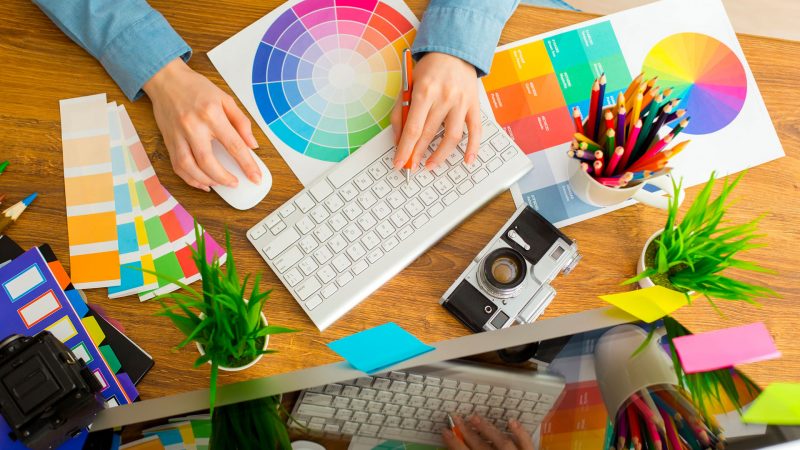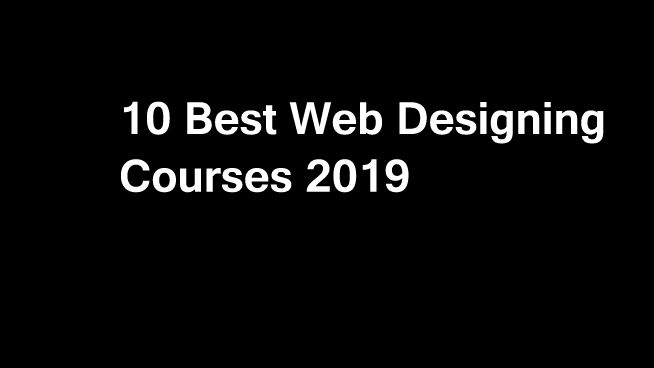Website Design Trends In 2020 To Follow

The best thing about being a web designer is that you can take charge of the project and let your imagination flourish. There are no boundaries in web design, a privilege not many other occupations will ever guarantee.
But creative freedom does not mean you should overlook the state of the art web design concepts and ideas. Professionals from all over the globe are doing all they can to improve the existing schemes and patterns, so you should keep an eye on the most interesting solutions and include them in your projects.
We’ve identified a lot of fresh ideas in 2020, but let’s check out the top 12 web design trends to follow this year.
- Minimalism and whitespace
It’s hard to call minimalism a trend, but it’s definitely making a comeback in 2020. Modern web designers don’t want to bother users with irrelevant features and so they stick to the decades-old “less is more” motto.
At the same time, minimalists are taking advantage of whitespace to create ultra-clean and purely functional websites. They do it to emphasize key webpage elements and neglect all the other details that might interfere with visitors’ interests. What is impressive about minimalism is that the concept keeps evolving but remains relevant regardless of the age.
- Text-only design
The second trend on our list doesn’t really belong to the minimalist movement, but it certainly shares a lot of common features. Namely, web designers are eager to experiment with text-only setups because they want to stand out from the sea of similar projects.
The concept is simple: Type in the text over a single-color background. All it takes is a good-looking font and a well-planned copy to impress the audience with alternative design solutions. The idea is bold, but it guarantees results in case of proper execution.
- Black and white
You’ve probably noticed already that 2020 is the year of simple and up-to-the-point design patterns. The third item on our list proves this point as it’s rather plain and elegant.
For example, a website like site of law firm Cahn Wilson reveals the power of black and white design. Although it’s a law firm, it wins over the visitors with the sheer elegance of its grayscale images. The site is fairly simple, but it doesn’t make it any less modern or extravagant.
- Dark mode
Similar to black and white, the dark mode also relies on a relatively new design solution. Contrary to popular patterns, web designers turn to darker aesthetics to indulge their clients and follow the demand of their target audiences. Some of the largest online platforms such as YouTube offered a dark mode a while ago and that was a clear sign for web designers to do the same.
Jake Gardner, a web designer at Instant Assignment Help, pinpoints another benefit of dark mode design: “The concept is highly functional because it perfectly aligns with brighter elements and it guarantees optimal readability.”
- Imperfections
Web designers realized that websites don’t have to be too complicated, but they figured out another thing in the meantime – websites don’t have to be perfect either. Perfect shapes, fonts, and images may give your site the notion of authority and professionalism, but imperfections make it look more natural and organic.
For instance, handwritten typography turns out to be very stylish and attractive. It gives you the chance to showcase brand personality and prove that you are different than niche competitors.
- Streamlined navigation
The days of complex and mind-boggling navigation systems are long gone. 2020 is when most designers are switching to streamlined navigation in an attempt to simplify websites and optimize performance.
It’s a totally natural move since modern users prefer minimalistic navigation and sites with only a handful of categories. Therefore, streamlined navigation is the way to go if you are trying to improve user experience in general.
- Combining graphics and images
A lot of web designers are trying to take the best of both worlds – digital and analog – by combining graphics and photography. The trend serves multiple purposes:
- It allows creative individuals to go wild and come up with truly amazing visuals
- It leads to memorable product images that drastically outperform traditional solutions
- It helps brands reach out to younger audience groups
The only thing that matters here is to mix the two elements carefully and respect the overall branding strategy of a client.
- User-triggered animations
The goal of every webpage is to drive engagement and inspire visitors to react. User-triggered animations are one of the best ways to do it, so you should definitely give them a try this year. How does it work?
Instead of letting the animation play on its own, you can create an interesting piece of content that users have to launch manually. That way, you show respect and appreciation while evoking interest and curiosity among visitors.
- Audio experiences
This trend is similar to the previous one, but we still want to give it a special place on our list. Audio experiences can be an incredibly precious attention-grabber, but only if you select the right tunes and enable visitors to turn on the sound manually.
Some users still might find it intrusive, but the whole point is to give them full control. If you do it like that, rest assured your audio effects will make a good impact on the target audience.
- Geometric shapes and patterns
Web designers who don’t enjoy imperfect websites can find geometric shapes and patterns to be a more interesting concept. A well-structured set of lines and figures often make a lovely combination that looks both futuristic and aesthetically pleasing. At the same time, different shapes allow you to emphasize different parts of a webpage or distinguish between the main categories.
- 3D elements
Websites have traditionally relied on 2D components due to the sheer nature of web design, but it all changed with the introduction of 3D elements. It’s not a brand new trend, but somehow it still keeps evolving and getting increasingly popular among industry professionals.
The secret lies in immersion since 3D components make the audience feel like stepping into the page rather than looking at it remotely. 3D creates more realistic experiences and makes web design interactive, which is exactly what most clients are hoping for in 2020.
- Futuristic color schemes
Web designers know that blue and similar high-authority colors dominate the Internet, but it’s time to make things brighter with futuristic color schemes. It’s a big trend because businesses love to dream about the future and give their brands a notion of modernism and extravagance.
In such circumstances, you shouldn’t be afraid of playing with stronger and more unusual color combinations, neon lights, glowing effects, and similar details that make websites vivid and versatile.
The Bottom Line
Web design is changing quickly and you have to pay attention to the latest industry trends. While you certainly don’t want to follow the herd, you should always keep an eye on new ideas because it will help you to come up with more interesting solutions for your projects. We showed you 12 web design trends to follow in 2020, but now it’s your turn to make a move and capitalize on some of these concepts.

